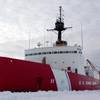Frontline Ltd., the world's second- biggest oil tanker company, said second-quarter profit slumped a greater-than-expected 46 percent as earnings declined for its older 1 million-barrel tankers.
Net income dropped to $68.6 million, or 92 cents a share, from $127.5 million, or $1.70, in the year-earlier period, Hamilton, Bermuda-based Frontline said today in a statement.
Frontline, led by Norwegian billionaire John Fredriksen, has failed to earn as much as rivals such as OMI Corp. and General Maritime Corp. from its 1 million-barrel ships, or suezmaxes, because almost half have single-layer hulls. Companies such as Total SA and Exxon Mobil Corp. have begun shunning such ships before an international ban, in favor of safer double-hull vessels.
Frontline's 26 suezmaxes earned about $16,000 a day less in the second quarter than Stamford, Connecticut-based OMI, the second-largest U.S.-based tanker owner, whose fleet is comprised entirely of double-hull vessels. That compares with a difference of about $8,000 a day last year.
Shares of OMI, which reported a 4.7 percent increase in suezmax freight rates for the second quarter, have climbed 24 percent this year. Shares of New York-based General Maritime, which recorded a 4.4 percent increase in rates, have gained 7 percent.
Frontline said it will look at other uses, such as oil storage, for its single-hull tankers, in order to extend their lives. Some, such as the Front Sunda, which suffered an explosion in the South China Sea in June, may be turned into a heavy-lift vessel to carry rigs and other offshore structures.
Daily earnings for Frontline's 41-strong fleet of 2 million-barrel tankers, known as very large crude carriers, or VLCCs, averaged $50,600 a day, down from $53,300 a day in the first quarter.
Frontline said it brought forward maintenance programs into the second quarter because of a decline in freight rates. Six ships were placed into dry docks, meaning a total of 220 lost earning days in the period.
Tanker spot rates, measured by the industry's Worldscale standard, averaged 71.92 Worldscale points for cargoes of about 260,000 tons from the Persian Gulf to Japan in the March-to-May period, according to the London-based Baltic Exchange. That's 16 percent less than a year earlier. Rates rose to a record 171.2 points on the route on Feb. 23 last year.
The March-to-May period is key for second-quarter earnings because bookings are typically accounted for a month later.
Frontline and other shipping companies struggled to maintain freight rates in the second quarter as the amount of oil shipped remained unchanged and the fleet of ships grew.
OPEC Production
Frontline runs most of its ships in the spot market on single-voyage contracts, hauling crude for companies such as Exxon and BP Plc.
Worldscale points are a percentage of a nominal rate, or flat rate, for a specific route. Flat rates, quoted in U.S. dollars a ton, are revised annually by the Worldscale Association in London to reflect changing fuel costs, port tariffs and exchange rates.
source: Bloomberg
Subscribe for
Maritime Reporter E-News
Maritime Reporter E-News is the maritime industry's largest circulation and most authoritative ENews Service, delivered to your Email five times per week










